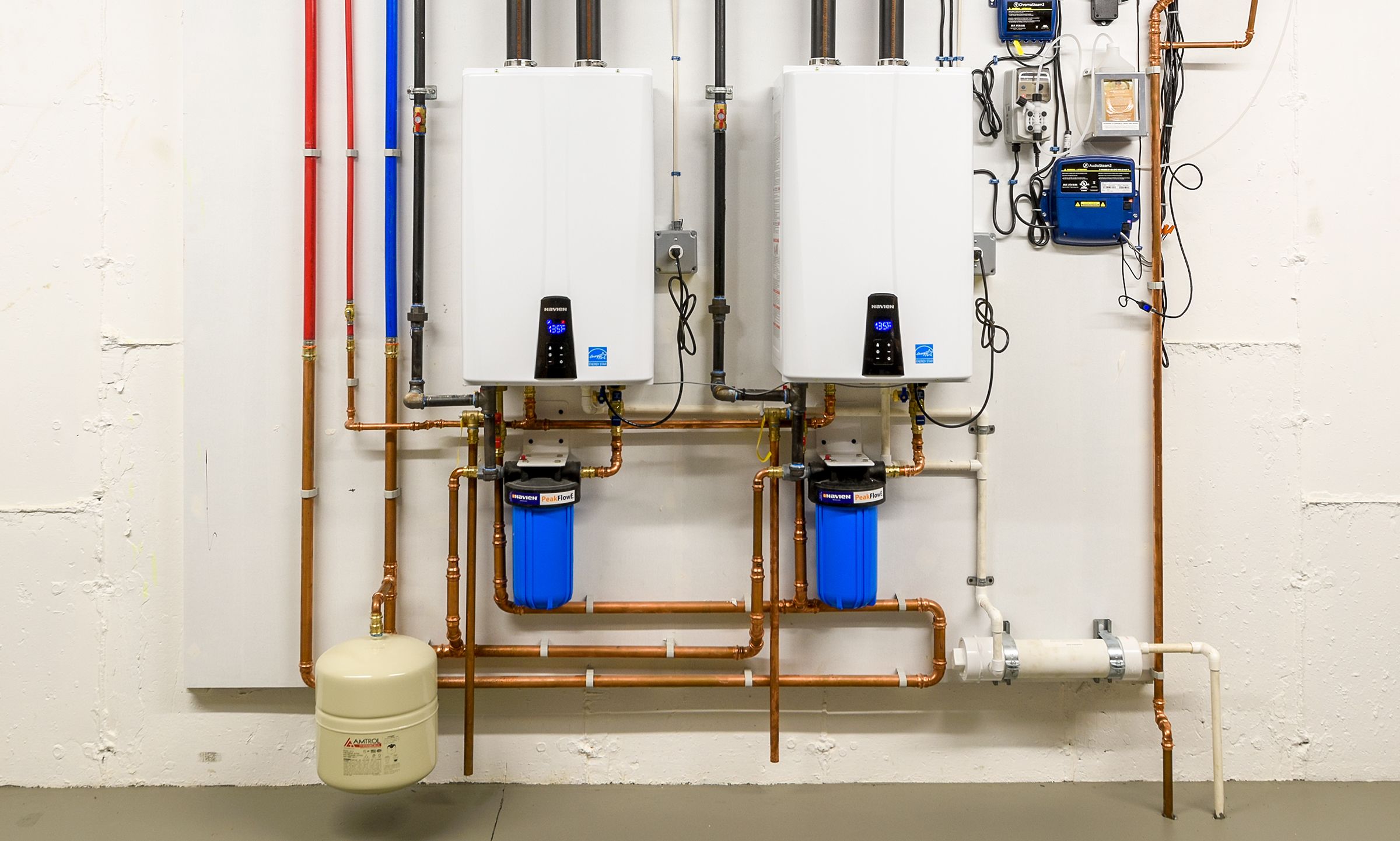A furnace should run for about 10-15 hours per day to maintain a comfortable temperature. When it comes to heating your home efficiently, understanding how long a furnace should run per day is crucial.
Properly managing your furnace runtime can help you save on energy costs while ensuring your home stays warm and comfortable. In this comprehensive guide, we will explore the factors that influence your furnace’s daily runtime, tips for optimizing efficiency, and signs that indicate your furnace may be running too frequently or infrequently.
By the end of this article, you will have a clear understanding of how to best manage your furnace operation for a comfortable and cost-effective heating experience. Let’s dive in!

Credit: blacklionhvac.com
Factors Affecting Furnace Runtime
Thermostat Setting
Lowering thermostat may reduce furnace runtime.
Insulation And Home Size
- Well-insulated homes require less furnace operation.
- Smaller homes may need shorter runtime.
Furnace Efficiency
High-efficiency furnaces can run less while providing optimal heat.
Understanding Optimal Furnace Runtime
A furnace’s runtime plays a crucial role in maintaining a comfortable indoor environment while also considering energy efficiency and health and safety concerns. Let’s explore the ideal timeframe for your furnace to operate each day.
Comfortable Temperature Level
Avoiding constant fluctuations in indoor temperature is key for staying comfortable and preventing energy waste.
Energy Efficiency
Maintaining an optimal runtime can help improve energy efficiency while reducing utility costs.
Health And Safety Considerations
Ensuring proper furnace runtime is essential for maintaining indoor air quality, preventing mold, and ensuring carbon monoxide doesn’t accumulate.
Tips For Optimizing Furnace Runtime
Furnace runtime is a crucial aspect of maintaining a comfortable indoor environment while also ensuring energy efficiency. Optimizing your furnace runtime can lead to improved comfort and cost savings. Here are some essential tips for optimizing furnace runtime that you can start implementing right away.
Regular Maintenance
Regular maintenance is essential for keeping your furnace running efficiently. Ensure to schedule annual maintenance appointments with a professional HVAC technician. During these check-ups, the technician will inspect and clean the furnace, ensuring that all components are functioning properly. This will help prevent unexpected breakdowns and ensure that your furnace runs at its optimal capacity.
Smart Thermostat Usage
Investing in a smart thermostat can be a game-changer when it comes to optimizing furnace runtime. These devices allow you to program temperature settings based on your daily routine, meaning your furnace only runs when needed. Additionally, some smart thermostats offer features such as geofencing, which adjusts the temperature settings based on your location, further enhancing energy efficiency.
Proper Insulation And Sealing
Proper insulation and sealing are vital for maintaining a consistent indoor temperature and minimizing the workload on your furnace. Inspect your home for drafts and air leaks, and seal them accordingly. Additionally, improving the insulation in attic and crawl spaces can help retain heat, reducing the need for your furnace to run constantly.

Credit: www.thisoldhouse.com
Calculating Ideal Furnace Runtime
Btu Output Of The Furnace
One important factor to consider when calculating the ideal furnace runtime is the BTU output of your furnace. The BTU (British Thermal Unit) output represents the amount of heat your furnace can produce in one hour. Higher BTU furnaces can heat your home more quickly, potentially reducing the overall runtime.
Outdoor Temperature
The outdoor temperature plays a significant role in determining how long your furnace should run. As the temperature drops, your furnace needs to work harder to maintain a comfortable indoor temperature. Lower outdoor temperatures may require longer furnace runtimes to achieve optimal heating. Monitoring the weather and adjusting your furnace runtime accordingly can help improve energy efficiency while keeping your home cozy.
Personal Comfort Preferences
Your personal comfort preferences are another factor to consider when calculating the ideal furnace runtime. Some individuals prefer a warmer indoor temperature, while others are comfortable with a cooler environment. By adjusting the thermostat to your desired comfort level, you can determine how long your furnace needs to run to maintain that temperature. It’s essential to find a balance between comfort and energy efficiency to ensure your furnace operates efficiently without wasting energy.
By taking into account the BTU output of your furnace, the outdoor temperature, and your personal comfort preferences, you can calculate the ideal furnace runtime for your home. Optimizing the runtime helps maintain a comfortable living environment while also reducing energy consumption and utility bills.
Common Mistakes In Furnace Runtime Management
Over-reliance On High Temperatures
One common mistake homeowners make when managing their furnace runtime is relying too heavily on high temperatures. While it might be tempting to crank up the heat in an effort to warm up your home quickly, this approach can actually be inefficient and costly in the long run.
When you set your thermostat to a high temperature, your furnace will work harder and run for longer periods of time. This can lead to increased energy consumption, higher utility bills, and unnecessary wear and tear on your furnace.
Instead of resorting to extreme temperatures, it’s important to find a balance that keeps your home comfortable without overworking your furnace. Set your thermostat to a moderate temperature that is suitable for your needs and avoid constantly adjusting it throughout the day. This will help your furnace run more efficiently and save you money in the process.
Ignoring Efficiency Ratings
Another common mistake that homeowners make is ignoring the efficiency ratings of their furnaces. Furnaces come with different efficiency ratings, which indicate how effectively they can convert fuel or electricity into heat. Ignoring these ratings can result in wasted energy and higher heating costs.
When choosing a furnace, it’s important to consider its efficiency rating. Look for furnaces with a high Annual Fuel Utilization Efficiency (AFUE) rating, as this indicates that the furnace can convert a greater percentage of fuel into heat. Higher AFUE ratings not only save energy but also reduce carbon emissions, making them more environmentally friendly.
In addition to selecting a furnace with a high efficiency rating, it’s crucial to properly maintain your furnace to ensure it continues to operate efficiently. Regular cleaning, inspection, and maintenance can help optimize your furnace’s performance and keep it running smoothly for years to come.
Inadequate Temperature Adjustment
A mistake that homeowners often make when managing furnace runtime is inadequate temperature adjustment. Many people set their thermostat to a temperature and forget about it, regardless of the actual conditions in their home.
Temperature adjustment is important for a comfortable living environment and efficient furnace operation. Adjusting the temperature based on factors like weather conditions, occupancy, and personal preferences can help optimize furnace runtime and energy usage.
For example, if you’re away from home for an extended period, lowering the temperature can conserve energy and reduce heating costs. Similarly, lowering the temperature at night when you’re bundled up in warm blankets can provide additional energy savings.
By taking the time to properly adjust the temperature in your home, you can ensure that your furnace runs efficiently and only when necessary, resulting in energy savings and improved comfort.

Credit: m.facebook.com
Frequently Asked Questions On How Long Should A Furnace Run Per Day
How Long Should A Furnace Run Per Day To Maintain A Comfortable Temperature?
A furnace should run for approximately 10-15 minutes per hour to maintain a comfortable temperature in your home.
Does Running The Furnace For Longer Periods Save More Energy?
No, running the furnace for longer periods does not save more energy. It’s more efficient to set the furnace to a steady temperature and avoid constant cycling.
Is It Normal For The Furnace To Run Continuously During Cold Weather?
Yes, during extreme cold weather, it’s normal for the furnace to run continuously to keep up with the demand for heat and maintain a comfortable temperature.
Can Running The Furnace For Shorter Periods Cause Cold Spots In The House?
Running the furnace for shorter periods may result in cold spots in certain areas of the house. It’s important to ensure proper airflow throughout the entire space.
How Can I Optimize The Runtime Of My Furnace For Efficiency?
To optimize the runtime of your furnace for efficiency, schedule regular maintenance, check air filters, insulate your home properly, and consider using a programmable thermostat.
Conclusion
Ensuring your furnace runs efficiently is vital for your home’s comfort and energy savings. By understanding the ideal running time and making necessary adjustments, you can optimize your furnace’s performance and cut down on energy costs. Regular maintenance and professional inspections are crucial for a well-functioning furnace.
Keep these factors in mind to increase your furnace’s longevity and maintain a comfortable living space.